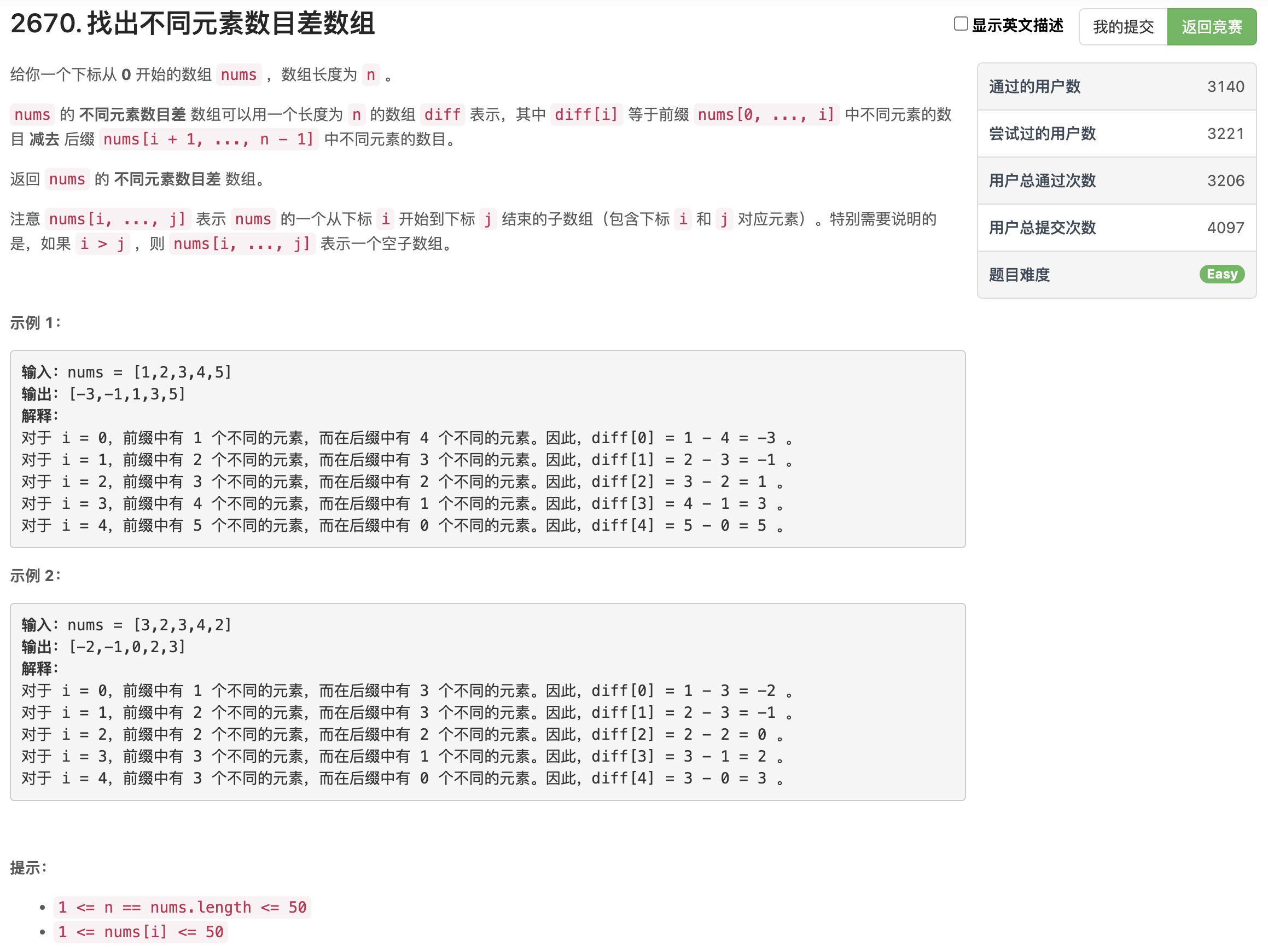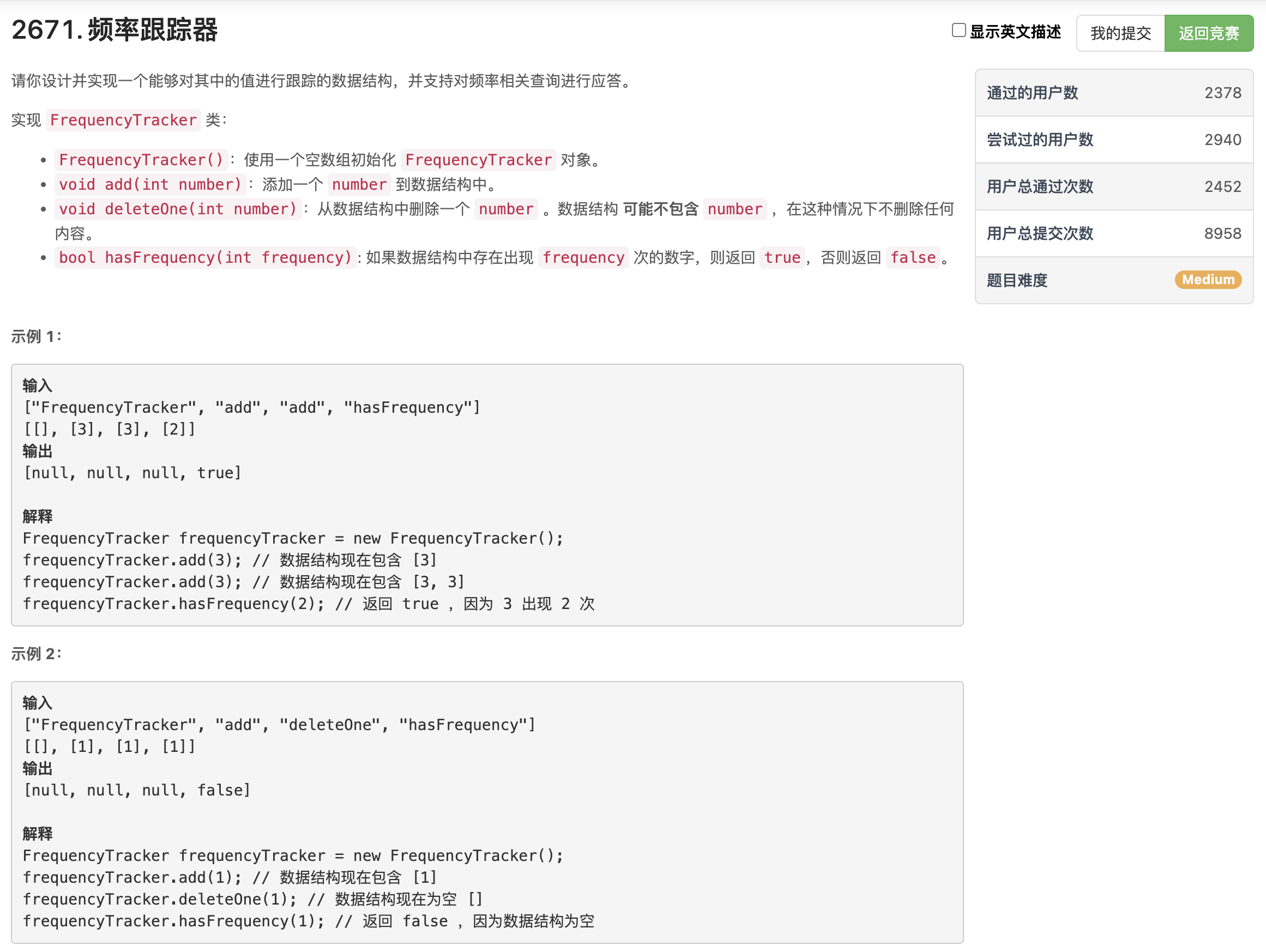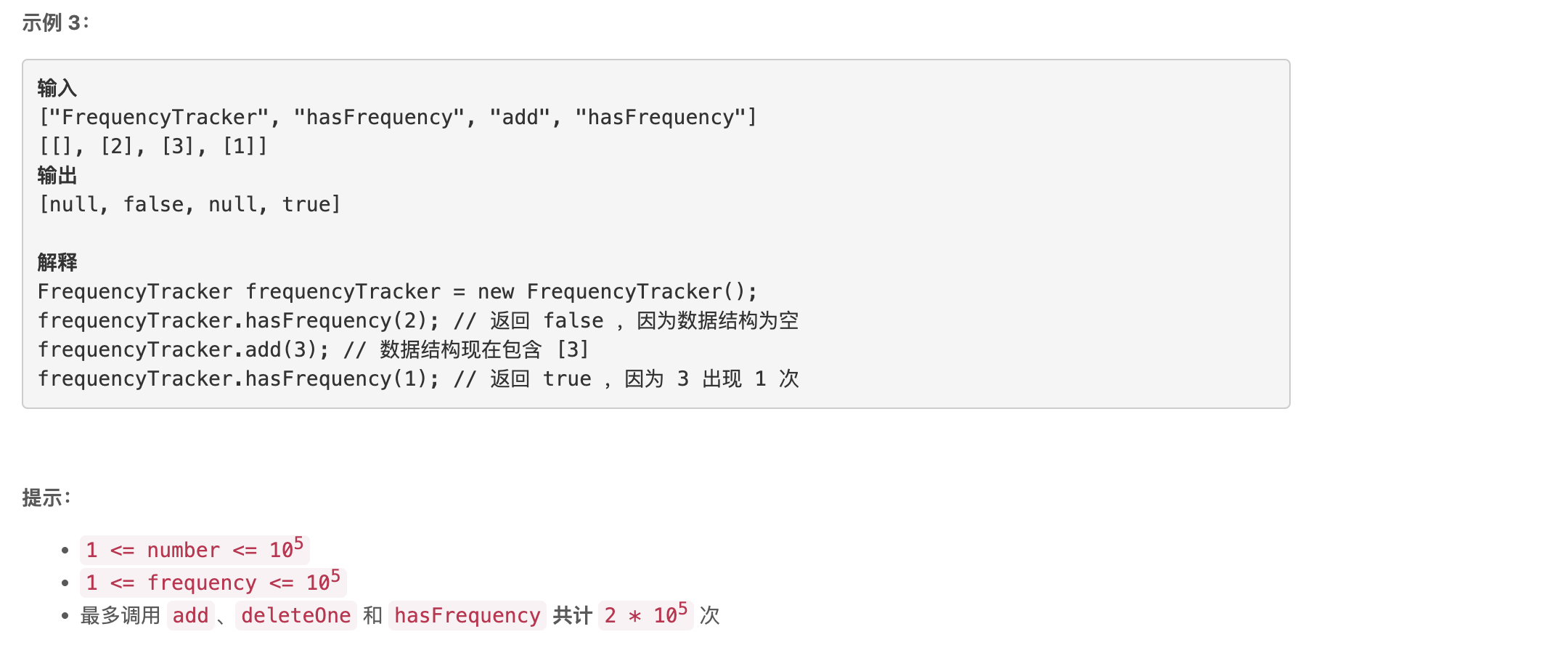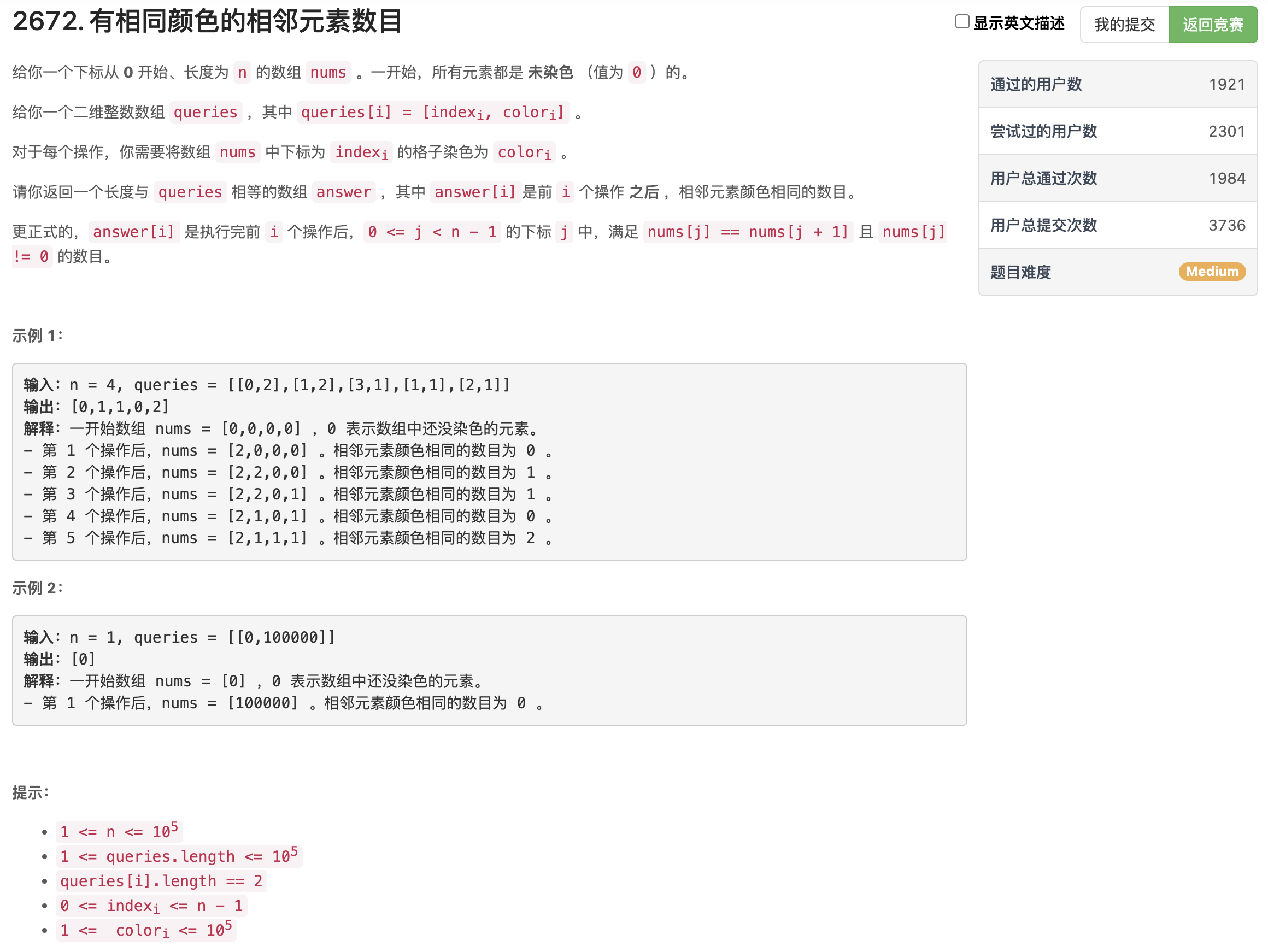周赛综述&总结:
看了看自己的账号记录,好像一下有几十场LeetCode周赛没有打了,再看看LeetCode这边的参赛人数,从当时参加比较多的6 7千人,变得可能只有3 4千人了。想想自己打周赛和不打周赛的原因?开始打周赛就是在室友的带领下有兴趣就自己也跟着玩玩,后来知道了有Knight、Guardian这些段位后,也想证明一下自己的算法能力?从大一没入学开始就一直挺爱好这些的,第一次知道有直接交了马上就能出答案的比赛类型,有点喜欢竞技的自己就爱上了这种模式。后来上了knight后又打了好一阵周赛,可能也是为了追人吧hhh,在一起和分手这段时间就成了自己的一个算法空白期,再加上还怕自己好不容易上的knight掉分。现在重新回来看,掉分有什么可怕的呢,就是一个显示而已别人也不会在意,反而自己不敢参加,疏离自己最爱的这些,才是一种没信心的表现吧,就从现在开始,重新出发吧!
第一题:作为t1基本就是按照题目的意思遍历,可以直接使用python的截断比较方便,然后不考虑复杂度直接list(set(…))
第二题:设计一个类的这种题,这个题主要是一个正向mapping和一个反向mapping,正向map是每个数字是多少次频率,反向map是频率下出现了多少次数字,按照题目的要求一步步实现基本就可以
第三题:更新前后进行一些判断,太久没看这个题了,现在有点忘了当时怎么做的,但好像是顺着思路比较好想的那种题
第四题:g
第一题:2670. 找出不同元素数目差数组 https://leetcode.cn/contest/weekly-contest-344/problems/find-the-distinct-difference-array/
题目大意
分析和解答 作为t1基本就是按照题目的意思遍历,可以直接使用python的截断比较方便,然后不考虑复杂度直接list(set(…))
1 2 3 4 5 6 7 8 9 class Solution :def distinctDifferenceArray (self, nums: List [int ] ) -> List [int ]:for i in range (len (nums)):1 ]1 :]len (set (a)) - len (set (b)))return res
第二题:2671. 频率跟踪器 https://leetcode.cn/contest/weekly-contest-344/problems/frequency-tracker/
题目大意
分析和解答 设计一个类的这种题,这个题主要是一个正向mapping和一个反向mapping,正向map是每个数字是多少次频率,反向map是频率下出现了多少次数字,按照题目的要求一步步实现基本就可以
1 2 3 4 5 6 7 8 9 10 11 12 13 14 15 16 17 18 19 20 21 22 23 24 25 26 27 28 29 30 31 32 33 34 35 36 from collections import defaultdictclass FrequencyTracker :def __init__ (self ):int ) int ) def add (self, number: int ) -> None :1 1 1 ] -= 1 return def deleteOne (self, number: int ) -> None :if self.num_to_feq[number] <= 0 :return 1 1 1 ] -= 1 def hasFrequency (self, frequency: int ) -> bool :if self.feq_to_nums[frequency] > 0 :return True else :return False
第三题:2672. 有相同颜色的相邻元素数目 https://leetcode.cn/contest/weekly-contest-344/problems/number-of-adjacent-elements-with-the-same-color/
题目大意
分析和解答 更新前后进行一些判断,太久没看这个题了,现在有点忘了当时怎么做的,但好像是顺着思路比较好想的那种题
1 2 3 4 5 6 7 8 9 10 11 12 13 14 15 16 17 18 19 20 21 22 23 24 25 26 27 28 29 30 31 32 class Solution :def colorTheArray (self, n: int , queries: List [List [int ]] ) -> List [int ]:0 for _ in range (n)]0 for i in range (len (queries)):if color[queries[i][0 ]] == queries[i][1 ]:continue 0 0 ]if idx - 1 >= 0 and color[idx] == color[idx-1 ] and color[idx] != 0 :1 if idx + 1 < n and color[idx] == color[idx+1 ] and color[idx] != 0 :1 0 1 ]if idx - 1 >= 0 and color[idx] == color[idx-1 ] and color[idx] != 0 :1 if idx + 1 < n and color[idx] == color[idx+1 ] and color[idx] != 0 :1 return res




